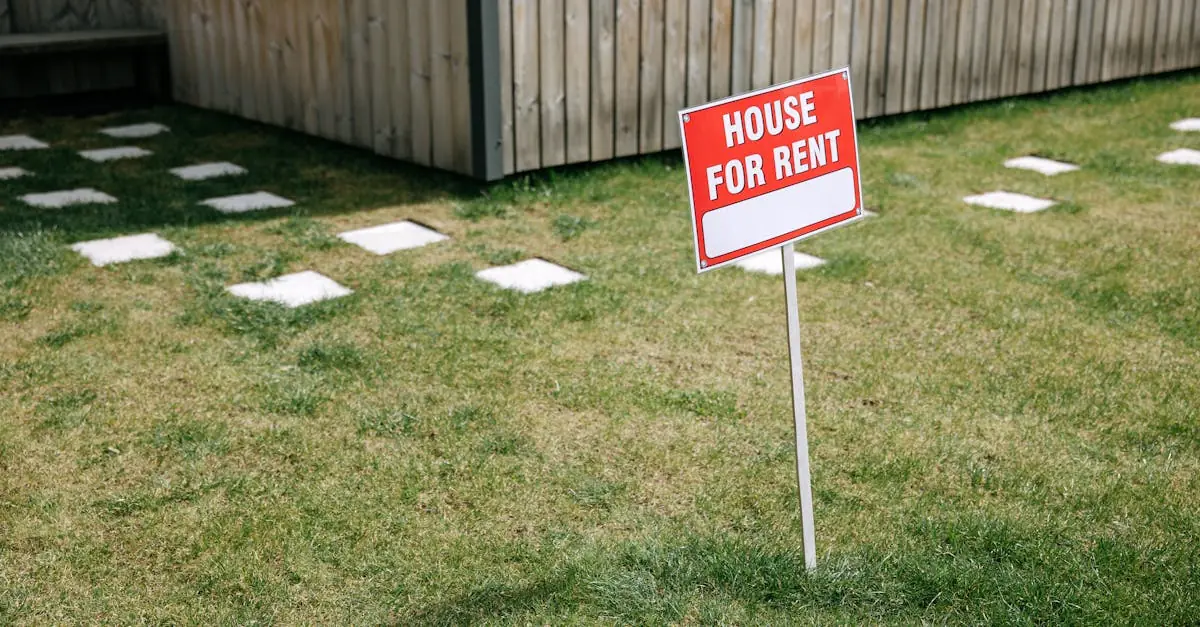Navigating the world of rental lease agreements can feel like deciphering an ancient scroll written in a foreign language. Yet, understanding these documents is crucial for both landlords and tenants. After all, no one wants to end up in a game of “he said, she said” when it comes to rent due dates or pet policies.
Table of Contents
ToggleUnderstanding Rental Lease Agreements
Rental lease agreements are critical documents that define the terms between landlords and tenants. Both parties benefit from a clear understanding of these agreements to prevent disputes and ensure a smooth rental experience.
Definition and Purpose
A rental lease agreement serves as a legal contract between a landlord and a tenant. This document outlines the rights and responsibilities of both parties, ensuring clarity regarding rental terms. Its primary purpose is to establish rules governing property use, payment schedules, and other essential details. Lease agreements help protect the interests of landlords by reducing the likelihood of misunderstandings. They also provide tenants with a clear framework for their obligations, fostering transparency in the rental relationship.
Key Components of a Lease Agreement
Several key components define a lease agreement. The rental amount, including due dates, specifies how much a tenant must pay and when. Security deposits outline the upfront payment needed for potential damages. The lease duration states how long the agreement lasts, whether it’s month-to-month or annual. Terms regarding property maintenance clarify responsibilities for repairs and upkeep. Finally, pet policies explain any restrictions about pets, ensuring both parties understand the rules from the outset. Each of these components contributes to a comprehensive understanding of rental obligations, protecting both the landlord and tenant.
Types of Rental Lease Agreements
Rental lease agreements come in several forms, each designed to meet different needs for landlords and tenants. Understanding these types helps in choosing the best option for individual circumstances.
Fixed-Term Leases
Fixed-term leases establish a specific rental period, commonly ranging from six months to one year. These leases benefit both landlords and tenants by providing stability and clear expectations. Renters typically enjoy the assurance of housing for the entire duration, while landlords secure a consistent stream of income during the lease term. Early termination of these agreements may incur penalties, reinforcing the commitment from both parties. Security deposit terms generally align with the lease duration, protecting landlords from potential damages or unpaid rent.
Month-to-Month Leases
Month-to-month leases offer flexibility for both landlords and tenants. These agreements automatically renew each month until either party provides a notice to terminate, often 30 days in advance. Such leases appeal to individuals seeking short-term arrangements or uncertain housing situations. Renters appreciate the ability to leave without long-term commitment, while landlords retain the option to adjust rent or seek new tenants. Payment terms commonly align with the calendar month, simplifying budgeting for both parties involved.
Important Terms and Clauses
Understanding critical terms and clauses in rental lease agreements ensures both landlords and tenants navigate their obligations with clarity. The following subsections detail key aspects that commonly appear in these agreements.
Rent and Payment Terms
Rent and payment terms specify the amount due and the schedule for payments. Typically, agreements state whether rent is due monthly or weekly. Late fees often apply if payments aren’t received on time. Methods of payment, such as checks or electronic transfers, are also outlined. Terms may detail acceptable forms of payment, providing convenience for both parties. Clear definitions help avoid disputes over timing and amounts.
Security Deposits and Fees
Security deposits protect landlords against potential damages. The agreement usually specifies the required deposit amount, which often equals one month’s rent. Terms should clarify the conditions for withholding part or all of the deposit upon the tenant’s departure. Additionally, any non-refundable fees, like move-in fees, must be explicitly mentioned. Providing transparency around security deposits helps set appropriate expectations for tenants.
Maintenance Responsibilities
Maintenance responsibilities delineate who manages repairs and upkeep. Typically, landlords handle major repairs related to the structure, plumbing, and electrical systems. Conversely, tenants are often responsible for minor maintenance and cleaning. The lease may specify routine tasks, such as lawn care or snow removal. Clearly defined responsibilities reduce the likelihood of misunderstandings and promote effective communication between landlords and tenants.
Common Issues in Rental Lease Agreements
Understanding common issues in rental lease agreements helps both landlords and tenants navigate potential conflicts. Two key concerns arise frequently: breaking a lease and dispute resolution.
Breaking a Lease
Breaking a lease occurs when either party ends the rental agreement before the term’s expiration. Tenants might need to break their lease due to job relocations or personal circumstances. Landlords may face early termination when tenants fail to adhere to lease terms. Penalties vary; states often impose specific laws regulating early termination fees. Essential knowledge includes understanding notice requirements and potential liability for unpaid rent. Negotiating with landlords may alleviate some consequences, especially if both parties reach a mutual agreement.
Dispute Resolution
Dispute resolution provides mechanisms for resolving conflicts between landlords and tenants. Common methods include mediation and arbitration, offering alternatives to litigation. Mediation involves a neutral third party guiding discussions toward resolution. Arbitration, on the other hand, involves a binding decision by an arbitrator. Many lease agreements incorporate clauses specifying preferred resolution methods. Both parties benefit from knowing these options, as they promote effective communication and preserve relationships. Clear understanding of the resolution process can prevent disputes from escalating and lead to satisfactory outcomes for all involved.
Tips for Tenants and Landlords
Understanding how to negotiate and draft lease agreements enhances the renting experience for both tenants and landlords. These tips offer practical guidance for navigating rental arrangements effectively.
Negotiating Lease Terms
Start negotiations by clearly identifying priorities. Landlords benefit from flexibility in lease length and pet policies while tenants value affordable rent. Evaluate local market conditions to find common ground. Discussing maintenance responsibilities early on maintains clarity. Asking for adjustments, such as repair response times, can also enhance tenant satisfaction. Negotiating can build a positive relationship and foster cooperative arrangements.
Best Practices for Drafting Agreements
Draft agreements using clear, unambiguous language. Specify rental amounts, payment due dates, and acceptable methods of payment in the document. Include terms regarding deposits, detailing conditions for their return. List maintenance responsibilities, ensuring both parties understand their obligations. Utilize standardized templates as guidelines while allowing for customization to meet specific needs. Review the document thoroughly with legal counsel to minimize future disputes.
Navigating rental lease agreements is essential for both landlords and tenants. Understanding the terms and clauses can prevent potential disputes and foster positive relationships. By selecting the right type of lease and clearly defining responsibilities, both parties can create a harmonious renting experience.
Taking the time to negotiate terms and reviewing agreements with legal counsel can further enhance clarity and security. Ultimately, a well-structured lease agreement not only protects individual interests but also lays the groundwork for a successful rental arrangement.








